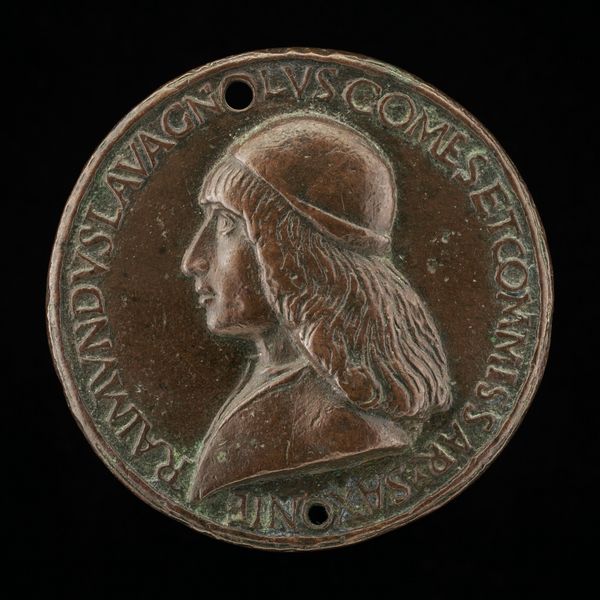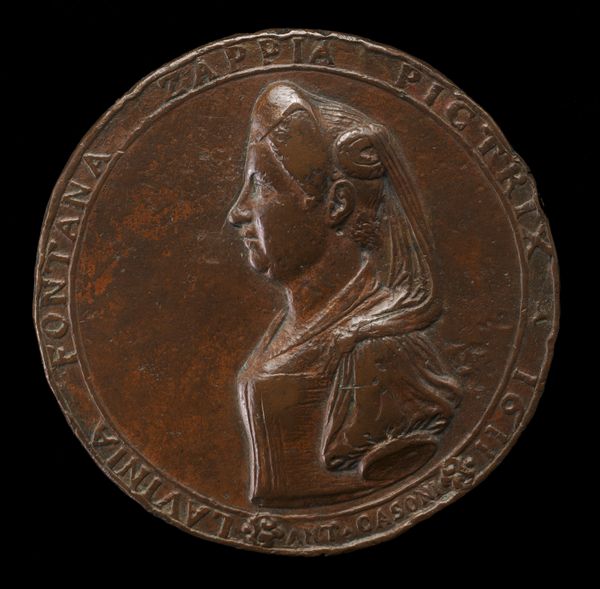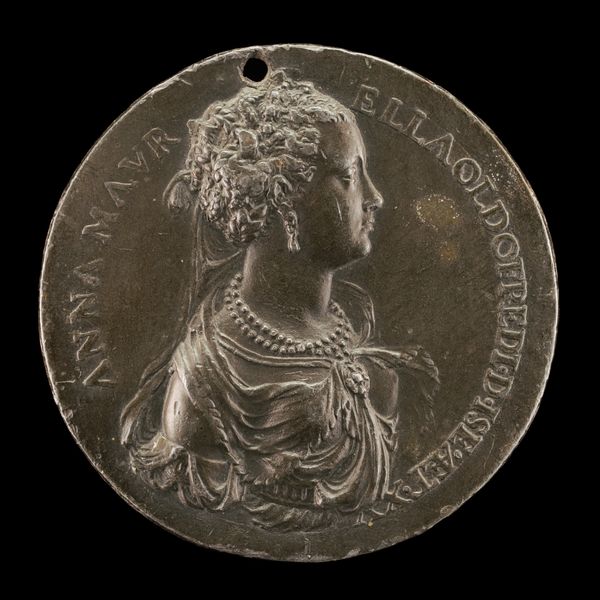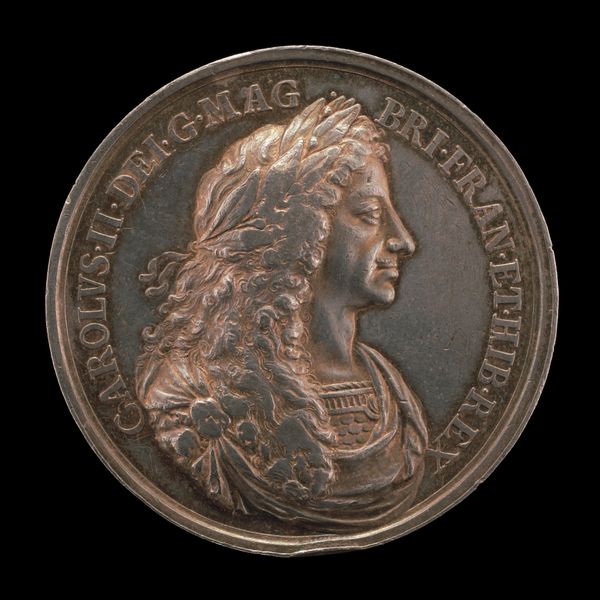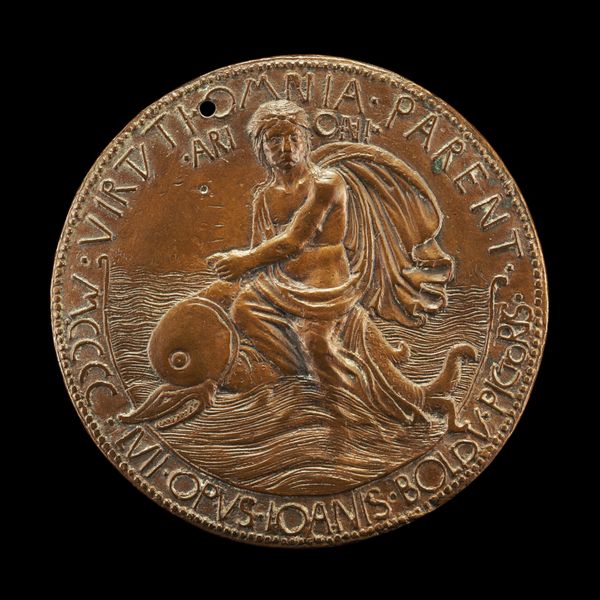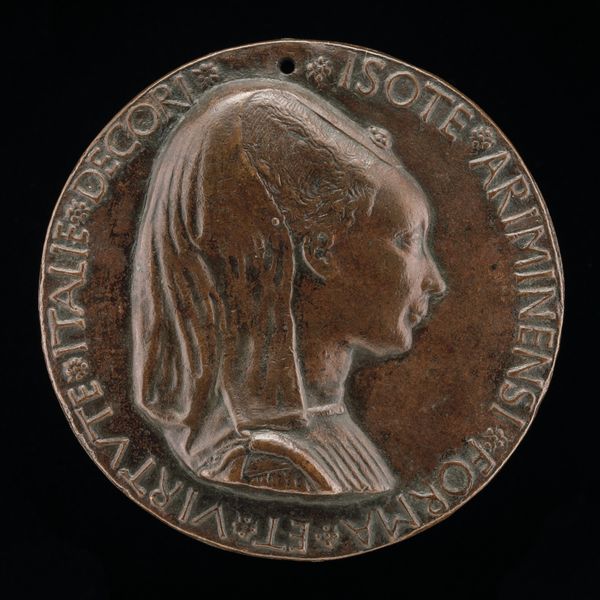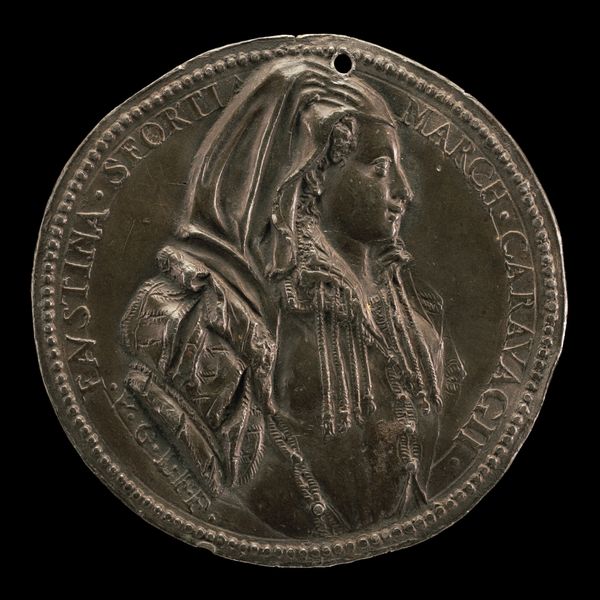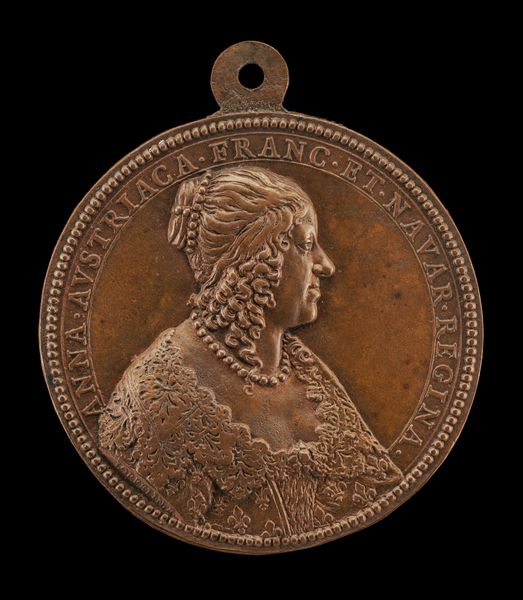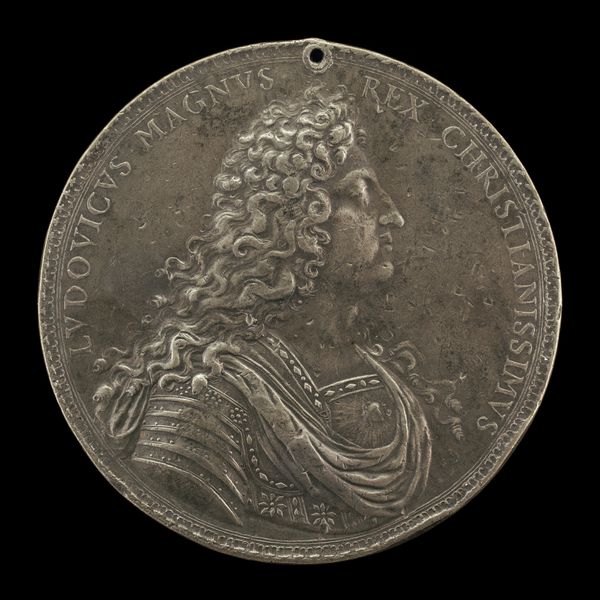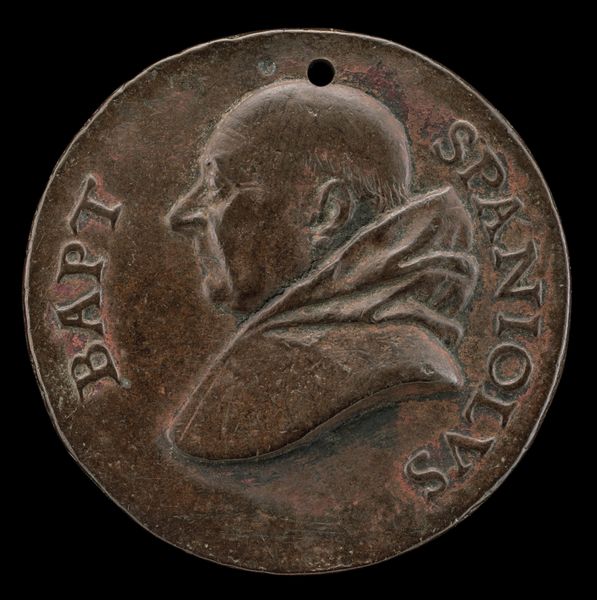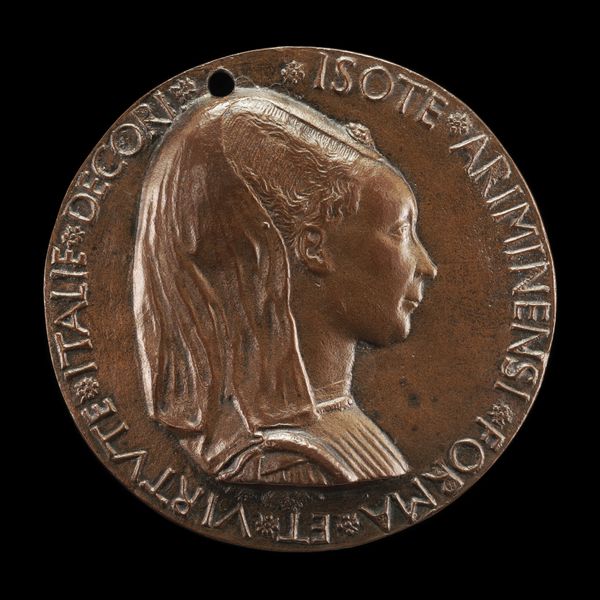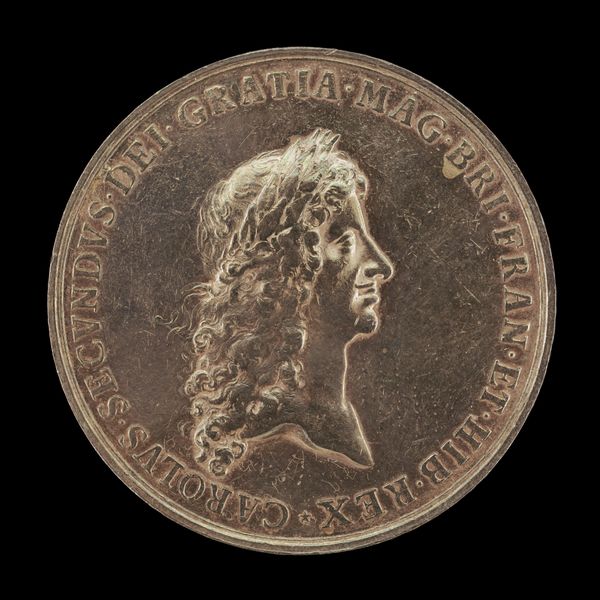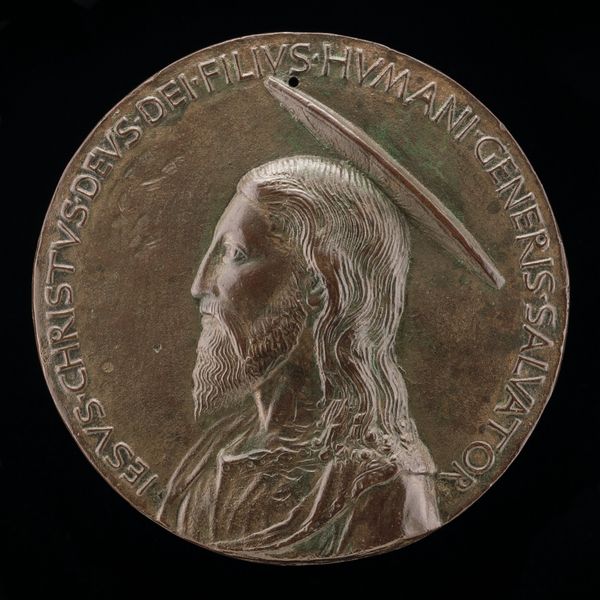![Contessina de' Bardi, died 1473, Wife of Cosimo de' Medici il Vecchio [obverse] by Antonio Francesco Selvi](/_next/image?url=https%3A%2F%2Fd2w8kbdekdi1gv.cloudfront.net%2FeyJidWNrZXQiOiAiYXJ0ZXJhLWltYWdlcy1idWNrZXQiLCAia2V5IjogImFydHdvcmtzLzhkNmZkMDM3LTdlN2EtNDVmNy1iMDhiLTMxYWM3ZDFhNjZlYi84ZDZmZDAzNy03ZTdhLTQ1ZjctYjA4Yi0zMWFjN2QxYTY2ZWJfZnVsbC5qcGciLCAiZWRpdHMiOiB7InJlc2l6ZSI6IHsid2lkdGgiOiAxOTIwLCAiaGVpZ2h0IjogMTkyMCwgImZpdCI6ICJpbnNpZGUifX19&w=3840&q=75)
Contessina de' Bardi, died 1473, Wife of Cosimo de' Medici il Vecchio [obverse] c. 1740s
0:00
0:00
sculpture
#
portrait
#
medal
#
sculpture
#
11_renaissance
#
sculpture
#
italian-renaissance
Dimensions: overall (diameter): 8.6 cm (18.96 lb.) gross weight: 180.16 gr (0.397 lb.) axis: 12:00
Copyright: National Gallery of Art: CC0 1.0
Curator: The medal displayed here commemorates Contessina de' Bardi, who died in 1473 and was the wife of Cosimo de' Medici il Vecchio. This particular piece was created around the 1740s by Antonio Francesco Selvi. Editor: There's a curious coolness to this object. The metallic surface and profile view give her an almost distant, regal air. What does the inscription surrounding her image say? Curator: The inscription reads: "ELECTA CONTESSINA BARDI COSIMI.P.P. VXOR", which translates roughly to "The Chosen Contessina Bardi, Wife of Cosimo, Father of the Nation". The medal is essentially a sculptural portrait meant to memorialize Contessina. The effigy presents a visual representation of her virtues and status, solidified by its creation two centuries after her death. Editor: I notice the delicate details etched into her hair, cascading down her shoulders. The treatment of the material creates depth, highlighting the play of light and shadow. The overall effect contributes to the lifelike quality, almost breathing. But it’s idealized. Curator: It certainly is. The Renaissance sought to emulate the classical ideals, to represent her not necessarily as she was, but how she should be remembered, associating her with virtues and signifying nobility. As the wife of Cosimo de' Medici, her image was intentionally intertwined with his legacy. Medals were not merely aesthetic objects; they actively contributed to shaping and preserving reputations across generations, almost like carefully crafted memories cast in metal. Editor: Indeed, the metallic form grants a kind of permanence, freezing her image and her role in history. This reminds us how much formal aspects are culturally determined. I can imagine what it meant in the Renaissance to strike a medal, in contrast to our world with an oversaturation of ephemeral pictures. Curator: Precisely, they remind us how carefully chosen the imagery was and is, even now when viewing these kinds of portraits, whether sculptural or painted, each carefully composed element holds encoded meanings for subsequent interpretation. The artistic conventions and aesthetic tastes can show us the continuity of human needs, desires, and cultural ideals. Editor: A beautiful object and an insightful journey through time! It really changes the perspective on this individual and those times!
Comments
No comments
Be the first to comment and join the conversation on the ultimate creative platform.
